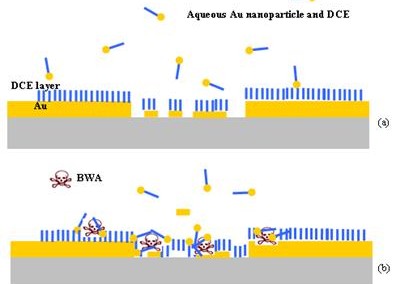Wireless Sensor Networks
Olfactory Cells for Detecting Improvised Explosive Devices (IEDs)
DESCRIPTION:
Under an NSF Phase I SBIR project (Contract No. IIP-0839598), in collaboration with the University of Maryland and Johns Hopkins University, Virtual EM has developed a stand off explosive detection system for detecting and identifying Improvised Explosive Devices (IEDs). Sensing unit is a bio-nose (which, in its commercial version, will be housed in a hand-held device) and utilizes live olfactory sensory neuron (OSN) cells harvested from laboratory mice’s noses. The cells are stabilized on a CMOS circuit with the aid of a microfluidics system and vibrate when they come in contact with the explosive molecules (Figure 1). This disturbance is picked up and processed by intelligent algorithms, which rule on the presence or absence of a particular strain of explosive molecule. There are both hand-held (1 meter range) as well as ZigBee-based wireless mesh network (100 meter range) versions. Work is currently being self-funded by all three team members and a custom-designed board is being manufactured to detect signals with a sufficiently high signal to noise ratio to enable spike detection.
SBIR TOPIC #: NSF_08.1_EL (Phase I)





